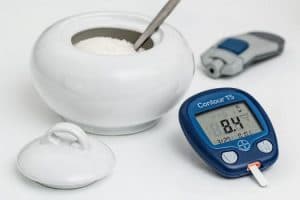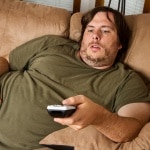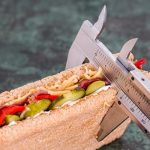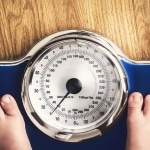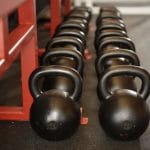In Part 1 of this two part series, I discussed the two articles on dieting and my experience speaking with professionals who help those with eating disorders resume/restore a healthy/healthier relationship with food…and exercise. I wrote about how difficult it is to lose weight for those who are overweight, and how challenging it is for eating disorders professionals to help their patients gain weight and restore health after years of disordered eating and disordered body image issues.
In this, Part 2, I intend to discuss my model for weight loss, and for exercise implementation, in both populations – the overweight/obese and the underweight/anorexic.
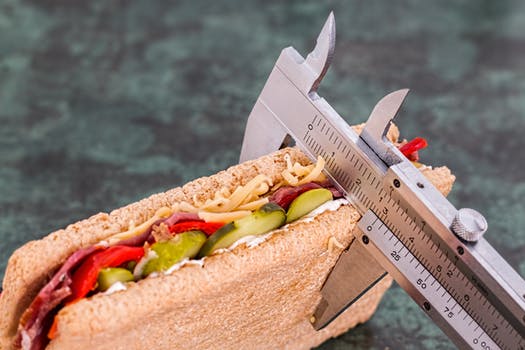
As a trainer, my goals are limited to what I can help my clients fulfill in my presence at the gym and even at home. Large demands are modulated by their own levels of energy, commitment and capacities, and to ask for more is to lay guilt trips on them.
That’s why I came up with the 2/3 diet: eat whatever you want, but just have 2/3 of it. The idea is, (1) to not restrict choices, (2) to enable continued joy of life, (3) support a healthy relationship with foods, and (4) allow for slow, gradual, and more sustainable weight control. The strategies vary but essentially I suggest clients put whatever on their plate they intended to eat, and remove a third of it into containers from which they cannot eat at least while sitting for that one meal. Have it later, but not now.
The model isn’t earth-shatteringly new. It’s based on caloric restriction, but it doesn’t put any foods off limits.
It doesn’t require calorie counting, and it doesn’t make you feel guilty for ordering, buying or eating foods. You may feel guilty about your inability to sustain the program but even following it loosely is a winner.
Why? Because you got heavy by eating whenever and whatever you wanted. By eating slightly less over time, you will effect a caloric reduction and lose some of your weight.
Will it be enough to brag about, to wear a bikini because of, or satisfy your doctor’s demands? That’s another story altogether. For now, though, weight loss must be viewed through the prism of achievability; and should be viewed through the lens of body image.
Few people shift from one extreme to another, though it does happen, but we don’t want to drive people in either direction, either. A 2/3 program seems safest on both counts.
In addition to the 2/3 diet comes a casual move-more exercise routine.
As you’ve probably read, much to your consternation, it’s very hard to lose weight via exercise alone. After all, you’d have to jog about 3.5 miles to burn off one slice of large pizza. ONE slice!
But exercise/activity is imperative so far as weight-loss maintenance is concerned. Studies show pretty convincingly that people are better able to keep the weight they lost via diet or diet-plus-exercise from coming back by increasing their physical activity. Depending on one’s initial weight category – overweight, obese, morbidly obese – the recommendations vary from 30 – 90 mins daily.
But that is way toooooo much to ask of someone who’s been overweight and sedentary for year, especially if they’re obese/morbidly obese.
There are several factors that mitigate against sudden increases in physical activity. Overall muscle weakness, faulty lower extremity alignment or biomechanics, psychological and emotional factors – all these may make it hard for overweight people to commit to sufficient amounts and intensities of exercise to effect weight loss….until they’ve lost some of their weight.
In essence, however, physical activity/exercise should be proffered not for weight loss but for general health; and for any post-weight loss maintenance of weight. So any, and I do mean any, increase of activity on a regular basis should be recommended and rewarded with gradual increases of such to be encouraged.
However, this advice does not suit those with eating disorders (ED).
ED is one of the most fatal of psychological diseases. It manifests in some variety of disordered eating such that an individual, most often a female, consumes fewer calories than needed to thrive, or even live. The main ED’s are anorexia nervosa (AN) and bulimia nervosa(BN).
AN is most recognized by extreme undereating. BN is often categorized as some version of purging after bingeing. The former results in extreme thinness, muscle wasting and bone loss. The latter may appear of normal or even excess weight, possible muscle wasting if malnourishment results, and bone loss if insufficient nutrients are not included or are purged after consumption.
Both AN and BN can be accompanied by exercise habits to the extreme. And some folks can simply fall into such behaviors by accident so to speak, and not by intent. We often see this in athletes who push themselves to their limits while limiting their caloric intake.
As a trainer, and even for many doctors of medicine and psychology, these diseases are beyond our scopes. But when I do have the opportunity to work with a recovering ED patient, I do the following:
- engage with the patient’s ‘team’ of docs, therapists, dieticians, etc
- avoid discussions of nutrition except where my advice is aimed at muscle building, with permission from the team
- initiate a total body strengthening program based on large muscle group exercises (squats, lunges, dead lifts, etc)
- focus on technique for safety, then gradually build in more load for bone and muscle development
- orient the program away from single-joint exercises for appearance and balance and anything that hints of looks, and aim for function in the context of the lifts themselves
- progress to functional, sports-based movements such as a cable or tubing lunge and row
- never discuss looks or appearance except in the context of safety and proper performance
- work with the team to minimize cardio intensity, maximize exercise pleasure and reinforce whatever they’re working on with the patient so long as I can continue building back lost muscle and bone
It sounds complicated and complicating, but the parallels are similar. The 2/3 diet is designed to allow the emotional side of weight management to rule while limiting the quantity without guilt-tripping. The ED workout model takes exercise to another level allowing for an appropriate amount and type as necessary for building muscle and bone while satisfying the emotional content many patients long for.
Ultimately, whether for weight loss or weight gain, to be done in a healthful manner, the emotional side of the formula cannot be negated. Each population has its fears and anxieties. As a trainer that’s hard to navigate. But sensitivity to these helps keep the clients on board and on task, in the long run.
So now I can read these kinds of articles with a measure of confidence that the science is good but not get worked up about it: at the end of the day, it’s really up to you as to how you want to live your life. I just want to help you do so safely and sanely. Read more here.

